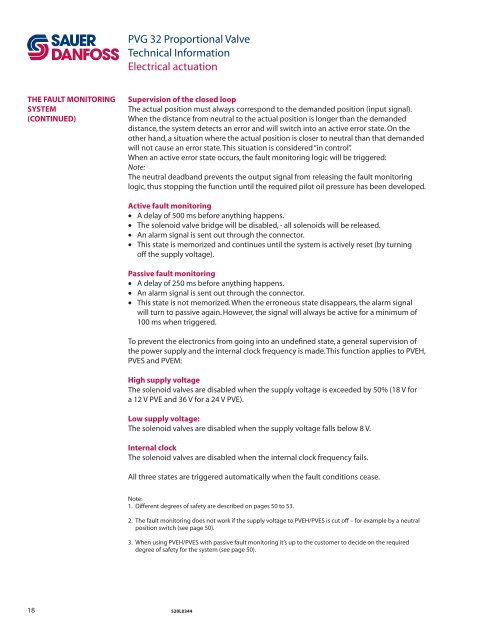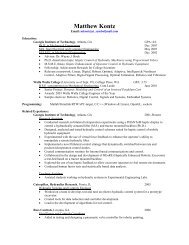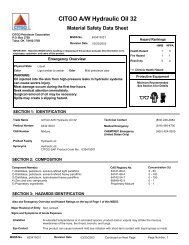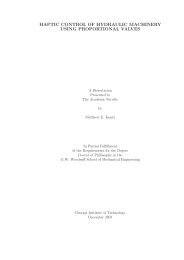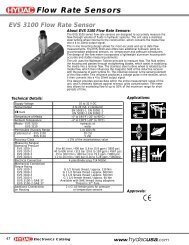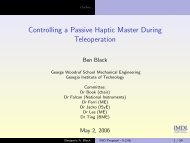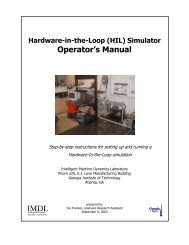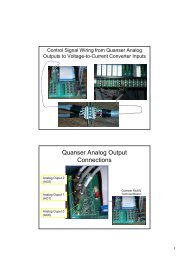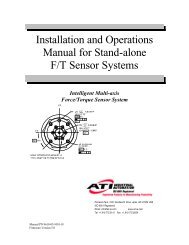PVG 32 Proportional Valves Technical Information
PVG 32 Proportional Valves Technical Information
PVG 32 Proportional Valves Technical Information
You also want an ePaper? Increase the reach of your titles
YUMPU automatically turns print PDFs into web optimized ePapers that Google loves.
<strong>PVG</strong> <strong>32</strong> <strong>Proportional</strong> Valve<br />
<strong>Technical</strong> <strong>Information</strong><br />
Electrical actuation<br />
THE FAULT MONITORING<br />
SYSTEM<br />
(CONTINUED)<br />
Supervision of the closed loop<br />
The actual position must always correspond to the demanded position (input signal).<br />
When the distance from neutral to the actual position is longer than the demanded<br />
distance, the system detects an error and will switch into an active error state. On the<br />
other hand, a situation where the actual position is closer to neutral than that demanded<br />
will not cause an error state. This situation is considered “in control”.<br />
When an active error state occurs, the fault monitoring logic will be triggered:<br />
Note:<br />
The neutral deadband prevents the output signal from releasing the fault monitoring<br />
logic, thus stopping the function until the required pilot oil pressure has been developed.<br />
Active fault monitoring<br />
• A delay of 500 ms before anything happens.<br />
• The solenoid valve bridge will be disabled, - all solenoids will be released.<br />
• An alarm signal is sent out through the connector.<br />
• This state is memorized and continues until the system is actively reset (by turning<br />
off the supply voltage).<br />
Passive fault monitoring<br />
• A delay of 250 ms before anything happens.<br />
• An alarm signal is sent out through the connector.<br />
• This state is not memorized. When the erroneous state disappears, the alarm signal<br />
will turn to passive again. However, the signal will always be active for a minimum of<br />
100 ms when triggered.<br />
To prevent the electronics from going into an undefined state, a general supervision of<br />
the power supply and the internal clock frequency is made. This function applies to PVEH,<br />
PVES and PVEM:<br />
High supply voltage<br />
The solenoid valves are disabled when the supply voltage is exceeded by 50% (18 V for<br />
a 12 V PVE and 36 V for a 24 V PVE).<br />
Low supply voltage:<br />
The solenoid valves are disabled when the supply voltage falls below 8 V.<br />
Internal clock<br />
The solenoid valves are disabled when the internal clock frequency fails.<br />
All three states are triggered automatically when the fault conditions cease.<br />
Note:<br />
1. Different degrees of safety are described on pages 50 to 53.<br />
2. The fault monitoring does not work if the supply voltage to PVEH/PVES is cut off – for example by a neutral<br />
position switch (see page 50).<br />
3. When using PVEH/PVES with passive fault monitoring it’s up to the customer to decide on the required<br />
degree of safety for the system (see page 50).<br />
18 520L0344


